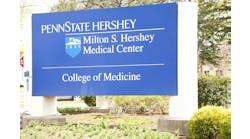HHS Releases Data on Transition to 988 Suicide and Crisis Lifeline
On Sept. 9, the U.S. Department of Health and Human Services (HHS) announced the release of new data on the first month of the transition to the 988 Suicide and Crisis Lifeline (988 Lifeline). In December, HHS, through its Substance and Mental Health Services Administration (SAMHSA), announced $282 million in funding to transition the National Suicide Prevention Lifetime’s 10-digit number to a three-digit dialing code—988. The transition took place on July 18.
According to a press release on the new data, there has been a 45 percent increase in overall volume and improvement in answer rates and wait times compared to data from August of 2021—the average speed to answer across all contacts decreased from 2.5 minutes to 42 seconds. In August 2022, the 988 Lifeline answered 152,000 more contacts via calls, chats, and texts compared to August 2021.
“HHS Secretary Xavier Becerra applauded the progress that has been made thanks to historic funding from the Biden-Harris Administration and Congress and collaboration among the federal, state/territory, and local governments across the country,” the release notes. “The Biden-Harris Administration has increased federal funding in the 988 Lifeline 18-fold in FY22, compared with FY21.”
Moreover, “To build on this progress, HHS, through Substance Abuse and Mental Health Services Administration (SAMHSA), is also announcing a new $35 million grant opportunity to better support 988 Lifeline services in tribal communities, which face unique challenges to accessing technology and crisis services. This funding will result in more trained crisis counselors being able to connect with even more people in need.”
During the month of September—National Suicide Prevention Month—HHS is awarding $25.3 million in suicide prevention grants, $3.7 million coming from American Rescue Plan (ARP) funding to address pandemic-related stress among younger individuals in the U.S.
The press release says that “The $25.3 million in grant funding includes:
- “$9 million in Cooperative Agreements for Innovative Crisis Response Partnerships grants for states, territories, tribes and public or private nonprofit entities to create or enhance existing mobile crisis response teams that can respond mental health crisis in lieu of law enforcement or emergency medical responders.
- $7.3 million ($3.6 million from ARP and $3.7 million from annual appropriation) in Cooperative Agreements for the Garrett Lee Smith (GLS) State/Tribal Youth Suicide Prevention and Early Intervention Program to support implementation of youth suicide prevention and early intervention strategies in schools, institutions of higher education, juvenile justice systems, substance use and mental health programs, foster care systems, and other child and youth-serving organizations.
- $2.2 million ($2.1 million annual appropriation and $102,000 ARP) for the GLS Campus Suicide Prevention Grant Program to support a comprehensive public health and evidence-based approach that: enhances mental health services for all college students, including those at risk for suicide, depression, serious mental illness (SMI)/serious emotional disturbances (SED), and/or substance use disorders that can lead to school failure; prevents and reduces suicide, and mental and substance use disorders; promotes help-seeking behavior; and improves the identification and treatment of at-risk college students so they can successfully complete their studies.
- $6.8 million for Cooperative Agreements for School Based Trauma-Informed Support Services and Mental Health Care for Children and Youth to increase student access to evidence-based and culturally relevant trauma support services and mental health care by developing innovative initiatives, activities, and programs to link local school systems with local trauma-informed support and mental health systems, including those under the Indian Health Service. With this program, SAMHSA aims to further enhance and improve trauma-informed support and mental health services for children and youth.”
HHS Secretary Becerra was quoted in the release saying that “Our nation’s transition to 988 moves us closer to better serving the crisis care needs of people across America. 988 is more than a number, it’s a message: we’re there for you. The transition to 988 is just the beginning. We will continue working towards comprehensive, responsive crisis care services nationwide to save lives.”


